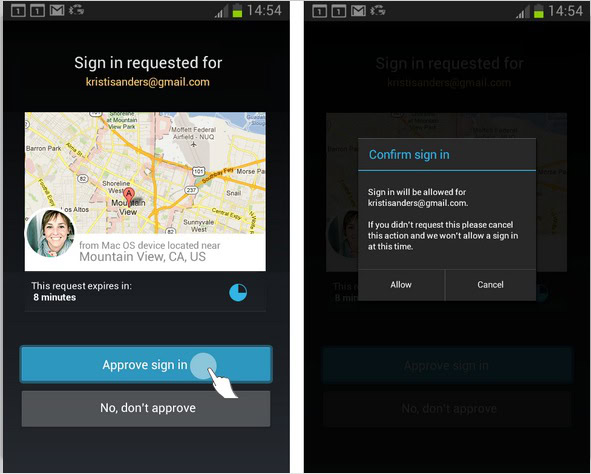Affiliate links on Android Authority may earn us a commission. Learn more.
Google to make 2-step verification mandatory, phones to replace passwords

The rise of mobile devices and persistent connectivity, as well as apps and cloud services, has put us all at potential risk when it comes to online security. Simply put, it’s no longer as basic as using strong passwords and strong encryption on websites and services. According to a recent effort by Google in making its systems more secure, the company is looking into implementing smartphone tagging, life-long tokens, and requiring two-step verification on its services.
This is part of Google’s revolving five-year roadmap for security. The last time Google made an effort to map out its big-picture security plan was in 2008, and it’s now high time to do a revamp. During that time, Google planned an implemented two-step verification, which required both a password and a key before granting access to a user’s account — originally sent as a six-digit code via SMS.
This has only been optional, though, and Google wants to “rollout a change to our login system in which we will be much more aggressive.” What happened since 2008? A lot, apparently.
Google cites a few things that have pushed the company to become more aggressive in its security stance. First, in 2008, smartphones were not yet as popular as they are today. Eric Sachs, group product manager for identity at Google, says that they did not see it coming. “Five years ago, this level of smartphone adoption was not predicted.” And so with the popularity of smartphones today, Google will weave in security and authentication with mobile devices, as well as back-end improvements.
High friction, but only at the start
According to Sachs, Google does not have qualms with increasing the so-called friction in logging in, if only to improve security. “We don’t mind making it painful for users to sign into their device if they only have to do it once.” The key here is that you only have to be inconvenienced once — such as by keying in both your password and a key, like one sent to your mobile phone via SMS or generated by an authenticator app. The next points of access or login should be token-based. Other apps and services should never have to ask for your credentials again, for as long as you have access to your mobile device.
Instead, Google’s proposed login methods would involve your mobile device of choice — your Android smartphone for instance. In place of keying in your password to access a third-party service, for example, you can simply approve your web login by approving it from an alert on your smartphone.
As alternatives, Google proposes using technologies like NFC to “bootstrap” logins. For example, you can login to a service by tapping your smartphone onto an NFC terminal on your notebook computer or other device. Of course, this assumes both devices support the technology, and Google actually envisions such a login method for Chromebooks. But because the company does not have control over other manufacturers’ hardware, Google is still going to look for acceptable standards that can work across different devices and platforms. The same goes for third-party applications, as not all developers and services use OpenID and OAuth.
Google knows you
Going beyond unlocking and authentication, though, Google’s plan for security is much more sophisticated. An added factor would be determining behavioral patterns and raising flags when usage deviates from these patterns. “We are beginning to experiment with apps on the phone that display notifications about risky behavior on an account.” For instance, you might usually access web apps and services from a certain location or during a certain time of the day. If you suddenly access it from another place (another country?) and at a strange time, then Google might ask you to approve the action on your mobile device before proceeding.

Apart from these systems, Google also espouses smarter hardware that will improve security and the platform for accessing apps and services. The company notes that systems like biometrics will be a good addition, although there are still issues with fingerprint or facial recognition, among others.
What Google says is difficult at this point is account recovery. “Account Recovery is our achilles heel,” says the white paper. Google says it should be easy enough for the real user to access, but still difficult for malicious hackers to crack. “Bad guys will try to hijack accounts through account recovery systems, but this poses hard challenges since the recovery systems have to help the real owner who has truly lost access to those other factors,” Sachs writes.
Another big concern is that security risks have grown because malicious hackers have found better ways to monetize hijacked accounts. As such, they are willing to go through lengths to get into these accounts.
Google is confident about the results of its earlier 2008 five-year security plan, and is hopeful that its 2013 plan will also result in better security for both end-users and developers. You can check out the draft report, PUBLIC DRAFT: Stronger Consumer Authentication – 5 year report, from the source links below. Google has also prepared a slide deck for a simpler presentation.